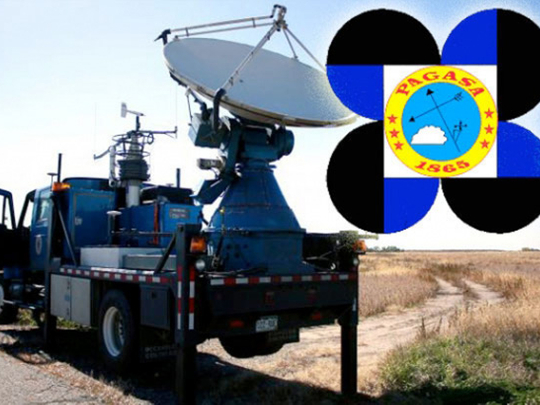
Manila: The Philippines has recently bared plans to field its own “storm chaser” teams to track down an accurately predict destructive weather disturbances, particularly typhoons.
Weather events that regularly occur in the country claim lives and destroy property, and while the country has made great strides in improving its capability to accurately predict these incidents, upgrades are constantly needed in order to save more people from potential disasters.
“Last year, we started the storm chaser technologies or the mobile radar to be deployed near the areas where the typhoon will hit … for additional weather monitoring for incoming weather disturbances,” Department of Science and Technology (DOST) chief, Secretary Mario Montejo was quoted as saying during a recent event held in southern Philippines’ Davao City.
Montejo said that even before powerful typhoon Haiyan struck the country in November last year, the DOST had seen the need for more hardware to accurately predict the strength and direction of weather disturbances.
He said in the case of typhoon Bopha that slammed the Davao Region and Compostela Valley it had been the first time in a long period that a Category 5 supertyphoon that generated winds of 280km/h struck that area.
“The need for storm chasers surfaced because weather conditions are getting more adverse,” Montejo said.
Storm chasers are trained individuals pursuing any weather condition. They are equipped with various weather tracking instruments from basic cameras to satellite-based tracking systems and live data feeds to vehicle-mounted weather stations. Stormchasing is a perilous job necessarily performed in pursuit of scientific studies. Ultimately knowledge gathered from this would be used to save lives and avoid disasters.
Montejo said that DOST has already identified a group from the Philippine Atmospheric and Geophysical, Astronomical Services Administration (DOST-PAGASA) to form the core of the storm chaser team who will go to various areas before the expected typhoon landing.
Montejo said that aside from the equipment and vehicle, the team would also be using high performance supercomputers to collect and make sense of the high-volume data that would be gathered as well as for complex weather modelling.
Currently Philippine weather prediction accuracy has expanded to within six-hours lead-time during typhoons. This development had given local authorities precise information on the strength, the exact location and direction of a typhoon and where it would hit, so that local officials could implement their evacuation plans.
Each year, thousands of Filipinos die because of lack of information about the intensity of typhoons. On an average, the country faces at least 20 weather disturbances of varying magnitudes in a year.











